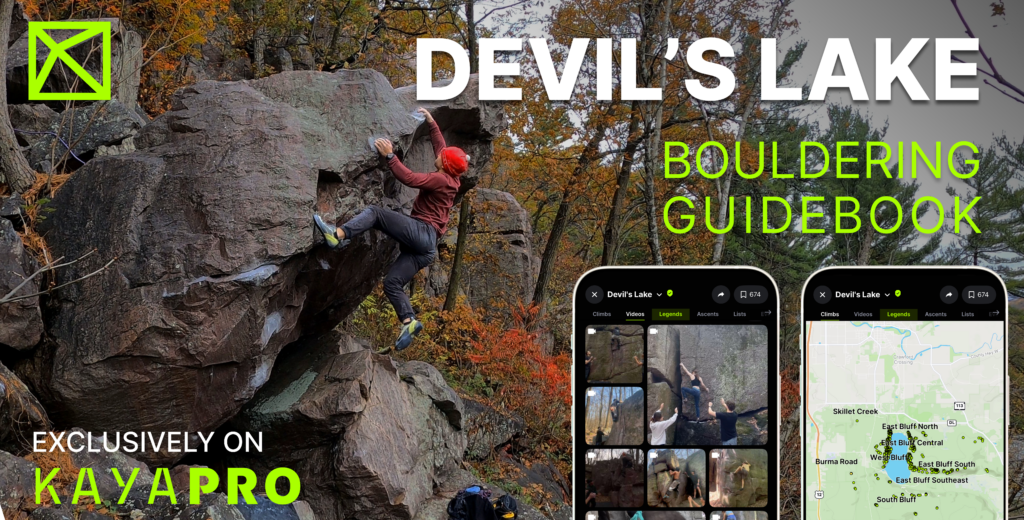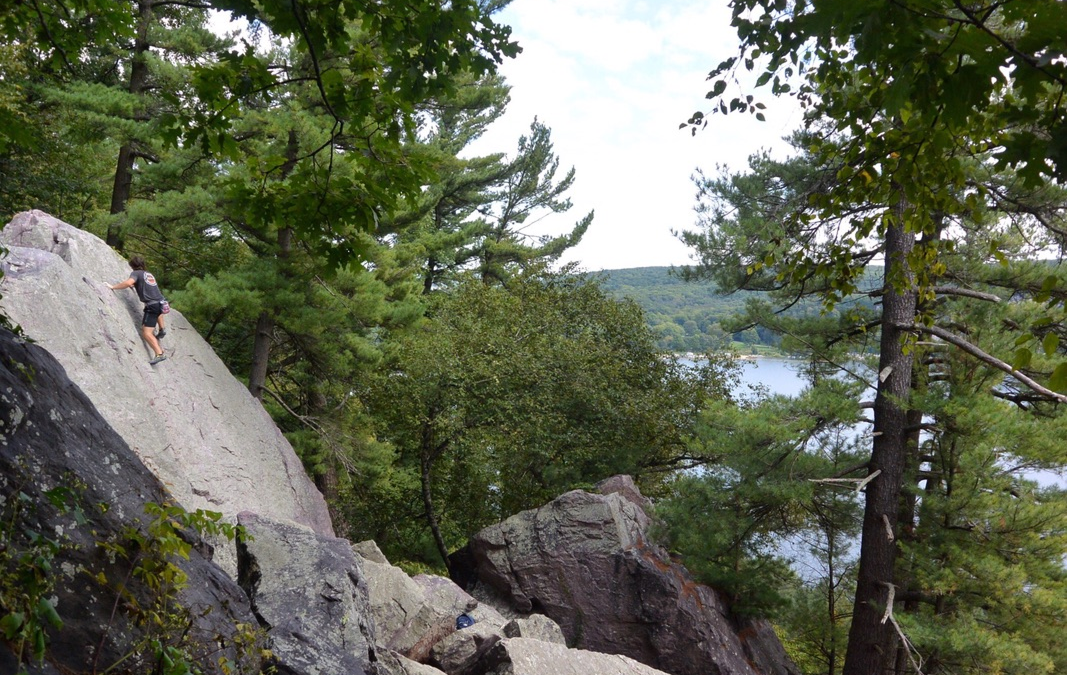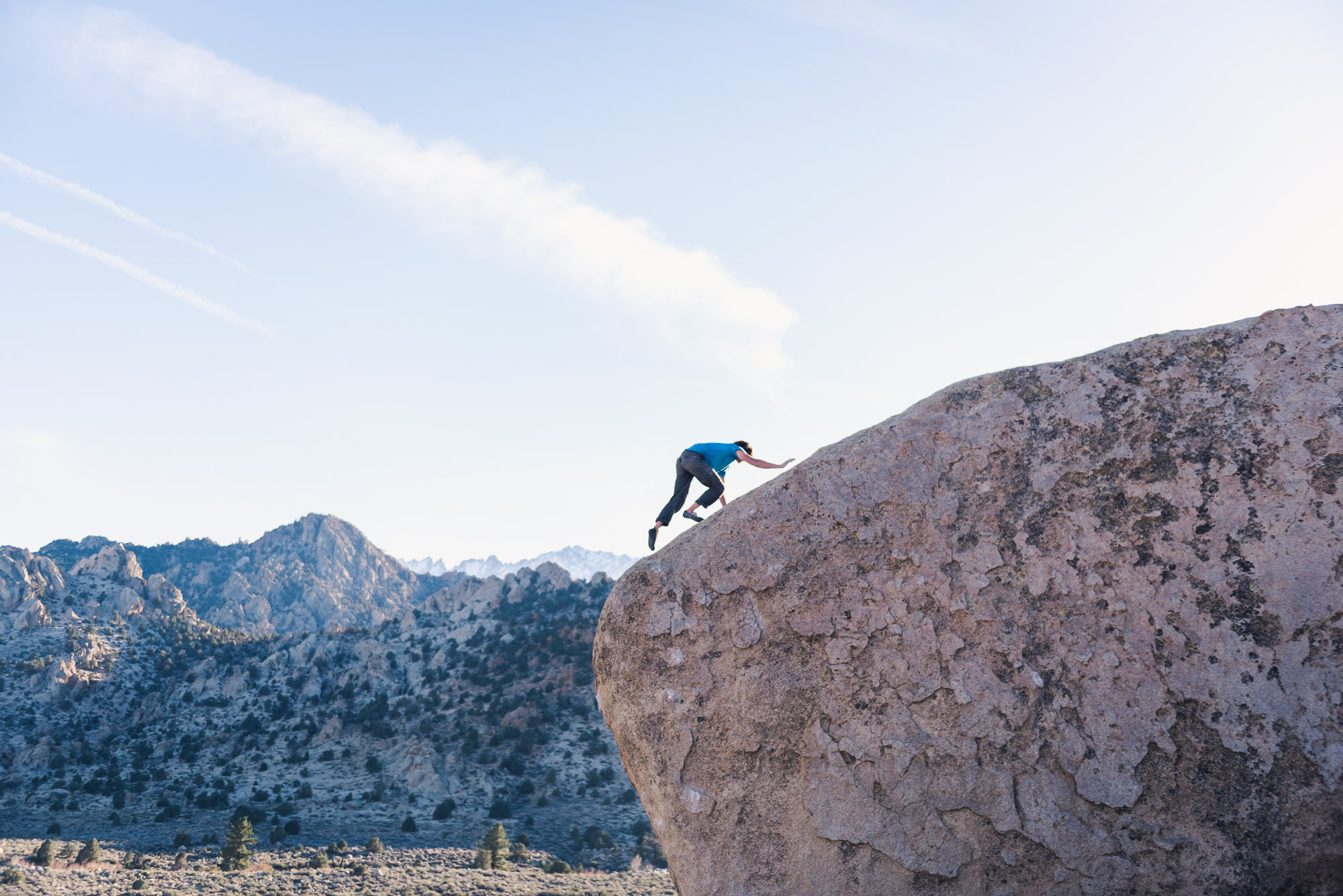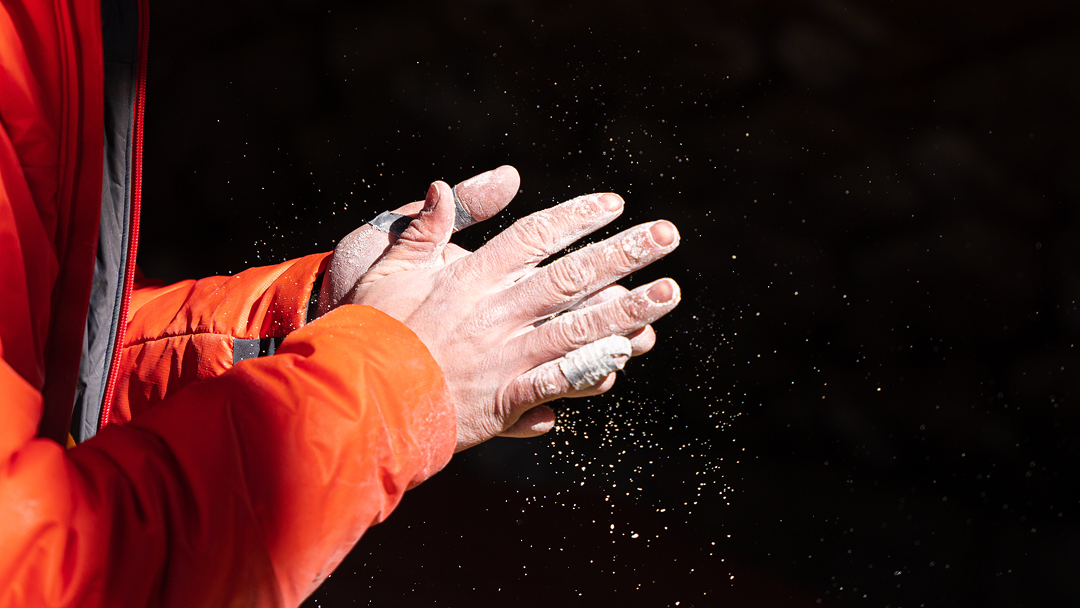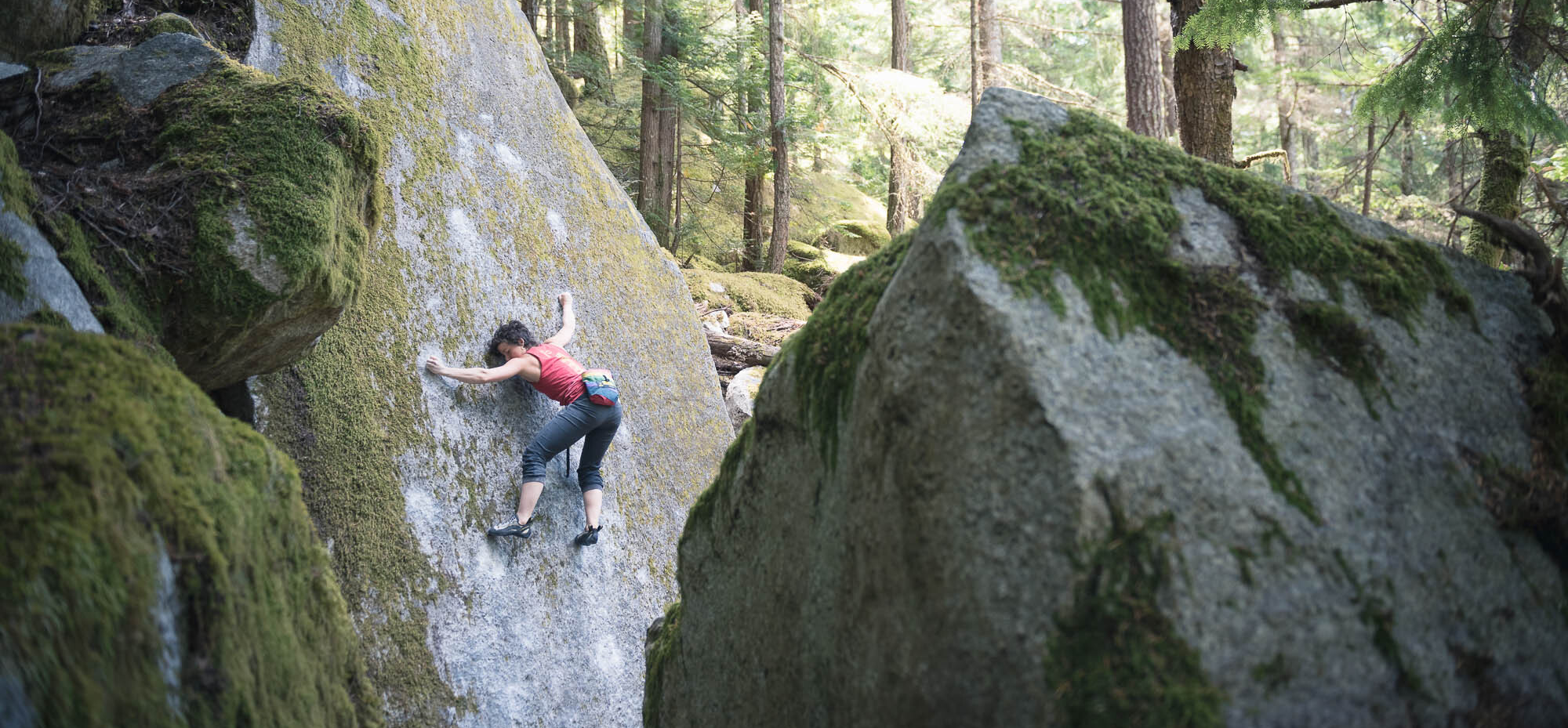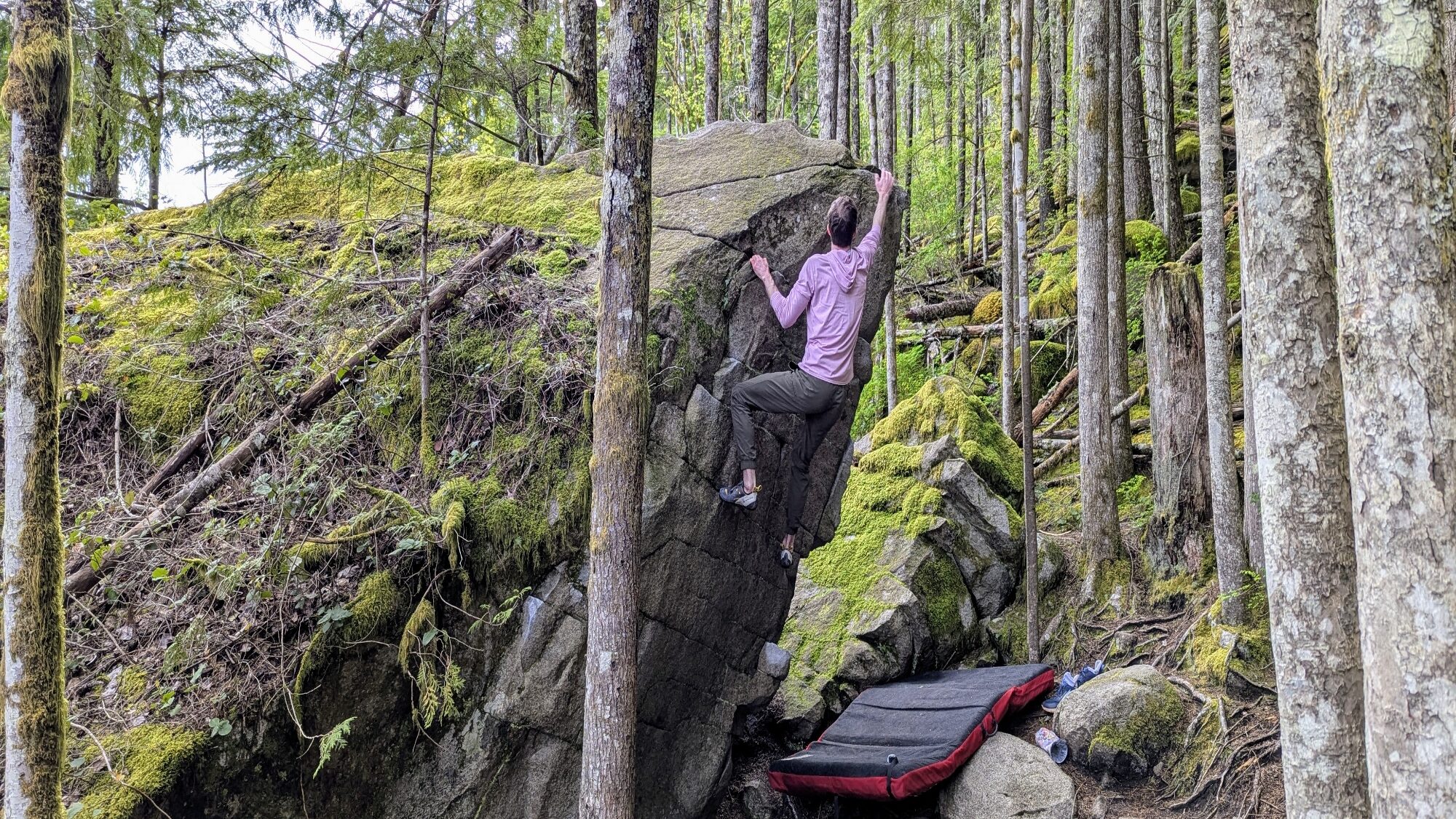Devil’s Lake Bouldering Overview
In the heart of the Baraboo Hills in southern Wisconsin, Devil’s Lake State Park is a Midwest gem with a rich climbing history and a striking natural setting. Known for its crystal-clear lake, steep quartzite bluffs, and extensive trail system, Devil’s Lake bouldering also boasts a long and storied climbing history, dating back to the 1920s. With climbs scattered across the East and West Bluff and deep talus fields hiding hidden gems, this historic area continues to evolve, offering something for everyone, from first-timers to seasoned crushers.
Whether you’re after classic test pieces or in search of hidden gems in the talus, Devil’s Lake delivers a uniquely challenging experience on bullet-hard Baraboo Quartzite. This guide breaks down what makes Devil’s Lake bouldering special, from its geology and style to seasonal beta and must-do boulders.
Also check out the Top 5 Most Popular Boulders in Devil’s Lake!
Understanding Devil’s Lake Bouldering
History of Devil’s Lake Bouldering
Climbing at Devil’s Lake began nearly a century ago, with documented ascents on the quartzite cliffs starting in the 1920s. The bouldering scene took off around 1958, when legendary climber John Gill visited the park and established The Little Flatiron—a V4 that still serves as a benchmark for climbers today.
Over the decades, each generation of climbers has added their mark, from trailside classics like The Zipper V7 and Big Bud V2 to projects deep in the talus. Some of the hardest lines in the park have gone up in recent years, with ongoing development continuing to push the limits. If you’re looking for historic stone and a deep sense of climbing culture, Devil’s Lake is unmatched in the Midwest.
For an in-depth look at the climbing history and development, check out Joel Ledvina’s Devil’s Lake guide on KAYA.
Rock Type and Climbing Style
Devil’s Lake boulders are Baraboo Quartzite, a dense, metamorphic rock estimated to be around 1.6 billion years old. Its origin as ancient sand subjected to intense pressure and heat has resulted in incredibly durable and glassy rock. The unique purple hue comes from iron and mineral impurities.
Climbing here can feel technical, old-school, and sandbagged, especially for those unfamiliar with the rock’s texture (or lack thereof) and subtle holds. The area rewards climbers with patience and precise footwork.
While the rock is unforgiving, its resistance to erosion makes it ideal for long-lasting, reliable boulders that dry quickly.
Best Times to Boulder in Devil’s Lake
Crisp, dry days in shoulder seasons offer the best friction and most rewarding sessions.
- Spring (March–June): A great time to climb with mild temps and increasing daylight. Be prepared for muddy approaches and bugs.
- Summer (July–August): Hot and humid conditions make climbing tough, but shaded talus zones can offer refuge. Early morning and late evenings are best.
- Fall (September–November): The prime season. Cool, crisp temps and vibrant fall colors make for the best climbing days of the year.
- Winter (December–February): Generally, the off-season. Snowfall can prevent access, and cold temps make it hard to stay warm.
Essential Areas for Every Skill Level
Guide author Joel Ledvina put together a Devil’s Lake Classics List on KAYA—check it out for the local favorites, hidden gems, and must-do problems!
Beginner-friendly Classics
While Devil’s Lake is known for its technical and sandbagged style, there’s no shortage of quality problems for beginners. With over 400 problems graded V3 and under, it’s a great place to build outdoor skills and technical footwork.
Areas like East Bluff and Burma feature clusters of approachable classics that are close to the trail and ideal for new climbers. Must-do problems include:
- Head Over Heels V2 – A blocky warm-up with good holds and great movement.
- Super Slab V0 – A favorite slab for learning how to trust your feet on slick quartzite.
- Flying Mancuso V3 – A fun problem with unique toe-hooks and multiple betas.
If you’re up for a little bushwhacking, head over to East Bluff Southeast to check out Sabertooth V2, a proud arete that rewards solid technique and commitment.
No matter what area you choose, rest assured that there will be plenty of beginner-friendly problems to test yourself on. Climbing a large volume of climbs in this grade range is the fastest and best way to quickly improve your technique on this rock type!
Intermediate Classics
Once you’re comfortable on quartzite, Devil’s Lake has plenty to offer in the V4–V6 range. These climbs often feel harder than their grade suggests, but they offer rewarding movement and beautiful lines.
Some local favorites include:
- The Little Flatiron V4 – An iconic test-piece established by John Gill. Slabby, thin, and techy.
- Baby Crane V4 – Subtle and technical, this problem requires body tension and precise movement.
- Magnum PI V6 – An overhanging arete with slopey holds and tricky beta—great for building confidence on typical Devil’s Lake movement.
Hard Classics
For advanced climbers, Devil’s Lake offers plenty of options. The polished surface and old-school grading mean that V7 and up here requires strength and technique, as well as excellent route reading.
Top picks for hard boulders:
- What Up Weasel V7 – A local favorite with compression movement and good edges.
- Tipping Point V8 – Tension moves leading out of a roof to a small mantel over the lip.
- Nausea V10 – Juggy and tall! Bring lots of pads and confidence for this one!
- Cast Iron V11 – One of the area’s most difficult and aesthetic lines, requiring precision and commitment.
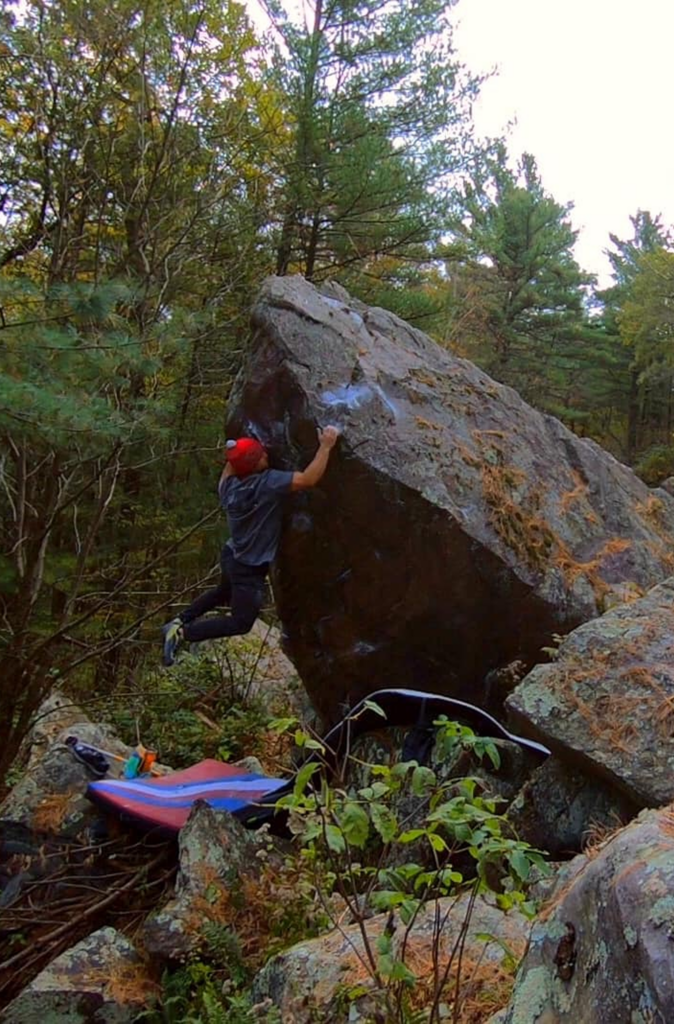
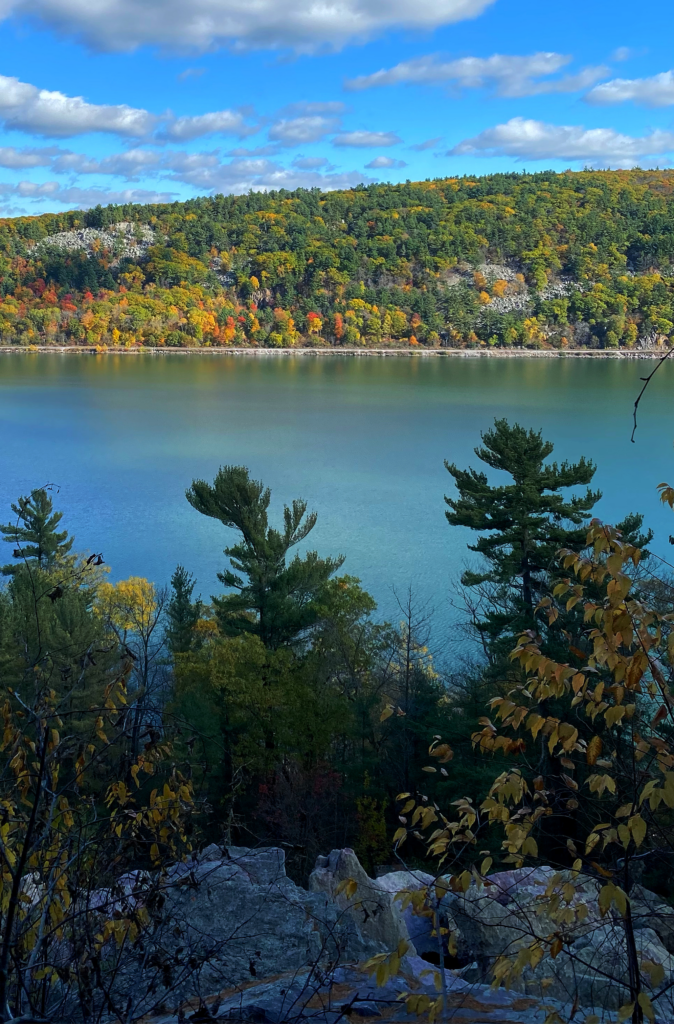
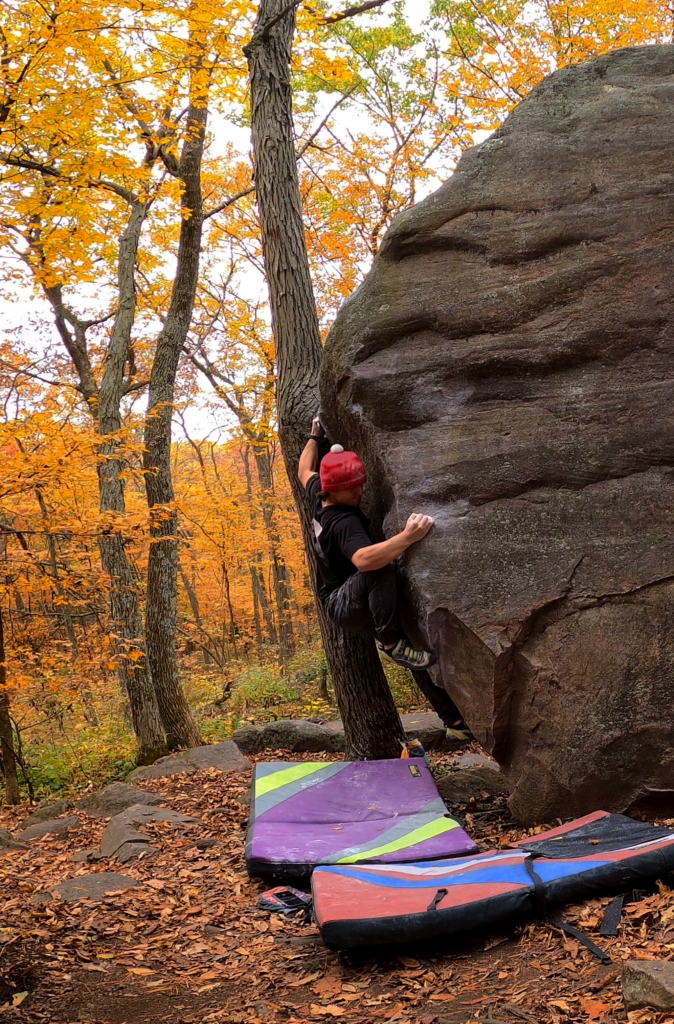
Planning Your First Devil’s Lake Bouldering Trip
With hundreds of boulders tucked into talus fields and scattered along quartzite bluffs, planning ahead will help you make the most out of your Devil’s Lake trip. The park spans a large area, and approach times can vary drastically—some problems are just minutes from the car, while others require a full hike and bushwhacking.
Consider focusing on one main area per day, and download Joel Ledvina’s full guide on KAYA to help you navigate. Cell service is spotty in the park, and many boulders are hard to find without a map or local beta.
Required Gear
Quartzite can be slick and sharp. Choose stiff-edged shoes with good precision. Multiple crash pads are essential due to uneven talus landings, and a good brush is a must for cleaning holds between attempts. Devil’s Lake has a dense canopy in many areas, so you’ll also want plenty of water, bug spray (especially in summer!), and long pants for bushwhacking through thorns and tick-heavy areas.
Skin Preparation
Quartzite is rougher than it looks, and gym skin won’t last long. Expect your tips to wear quickly—especially on problems with small crimps. Bring skin care essentials like sandpaper, balm, and tape, and consider building in rest days if you’re planning a multi-day trip.
Navigation tips
Make sure to download the KAYA guide before you head out. Many trails are unmarked, and it’s easy to get disoriented in the talus.
Main Access Points: North Shore (via Hwy 113) and South Shore (via Hwy 159).
Closest Airports: Madison (1 hour), Milwaukee (2 hours), and Chicago (3 hours).
Safety and Ethics Essentials
- Spotting is crucial, Many problems top out high or have sketchy landings. Have solid spotters who communicate clearly.
- Pad placement matters. Quartzite landings can be sharp and uneven. Use multiple pads and cover gaps.
- Respect closures and private property. Some sectors are near sensitive or off-limits areas. When in doubt, ask a local or check on KAYA.
- Leave No Trace! Pack out trash, brush holds, and minimize erosion on approach trails.
- Dogs are allowed in most areas, but must be on leash and under control at all times. Clean up after them, and be mindful around other climbers.
Devil’s Lake Bouldering Conclusion
Devil’s Lake delivers a truly unique bouldering experience in the heart of the Midwest. Whether you’re exploring talus zones for the first time or trying to send your project on polished stone, this place will challenge and reward you.
Plan ahead, climb with care, and savor the history beneath your feet. Devil’s Lake may not hand out easy sends—but that’s part of the fun.
For GPS maps, problem updates, and ticklists, check out Joel Ledvina’s Devil’s Lake bouldering Guide on KAYA.
